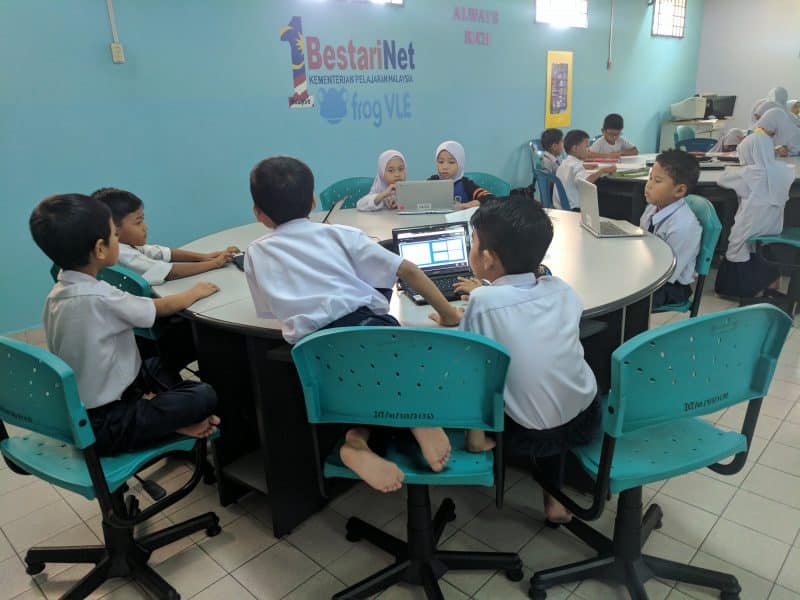Malaysia has a very unique education system: over the past two decades, the government has invested millions of dollars in equipping all 10,000 public schools with not only computer labs, but also the Frog Virtual Learning Environment (VLE). Unsurprisingly, though, challenges still arise and vary school by school. In our newest report published in conjunction with the WISE Initiative, we found examples that illustrate that blended models are not about the tech itself but about the creative instructional models that educators manage to wrap around the tech. Blended Beyond Borders: A scan of blended learning obstacles and opportunities in Brazil, Malaysia, & South Africa is meant to give a snapshot of blended-learning efforts (or opportunity gaps) in each country, as well as give policymakers and practitioners recommendations on how they can help blended efforts flourish in their context. Our partners at the edtech nonprofit FrogAsia were instrumental in helping us to gather data and understand the landscape of the Malaysian education system.
In Malaysia, some of the most illuminating data came from one specific question we asked in the survey, “What are your key challenges when using technology?” As the graph below makes clear, there are four challenges that the majority of educators are facing: Reliable and sufficient internet (77.31%), infrastructure problems (65.55%), high-quality professional development for teachers (55.46%), and funding and/or finance (55.46%). 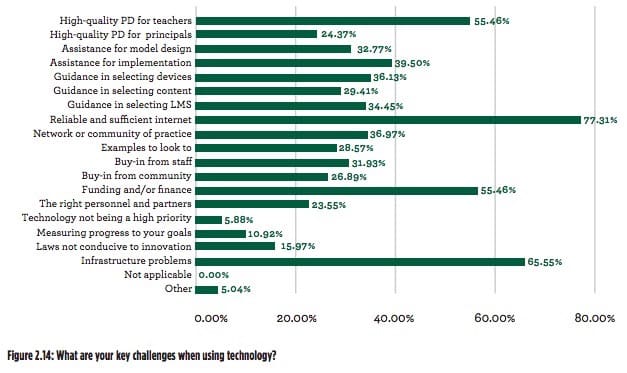
This past June, I had the privilege of visiting 13 Malaysian public schools–eight of which, despite these challenges, were implementing fantastic blended-learning programs that were truly changing instruction for their students.
Blending with little financing
SK Bandar Hilir is an all-boys public primary school in the coastal city of Malacca. They are one of 150 schools in Malaysia who have a Frog Classroom–a 21st-century learning space equipped with bright, flexible furniture; Chromebooks loaded with the Frog VLE; and other logistical necessities such as a computer cart for storage and safe-keeping. Schools across the country have the opportunity to apply for one of these classrooms, where half of the funding is provided by the privately-owned YTL Foundation. The other half of the funding, however, is up to the schools to raise. Although a great opportunity, being granted only half of the required funding can still be a barrier for schools to bring in technology to transform student learning.
The headmistress of SK Bandar Hilir did not let the RM 5,000 (about $1,200 USD) fundraising challenge stop her. She appealed to parents and community members to donate whatever they could for this project, including their time and expertise. Through a community campaign, not only did the school come up with the money needed to buy equipment for the classroom, but they also were able to solicit parent volunteers to help paint the walls, set up the furniture, and decorate the interior. Today, students in grades D2-D6 (the US equivalent of second through sixth grades) get to learn in this beautiful new environment where they utilize a Lab Rotation for all of their subjects.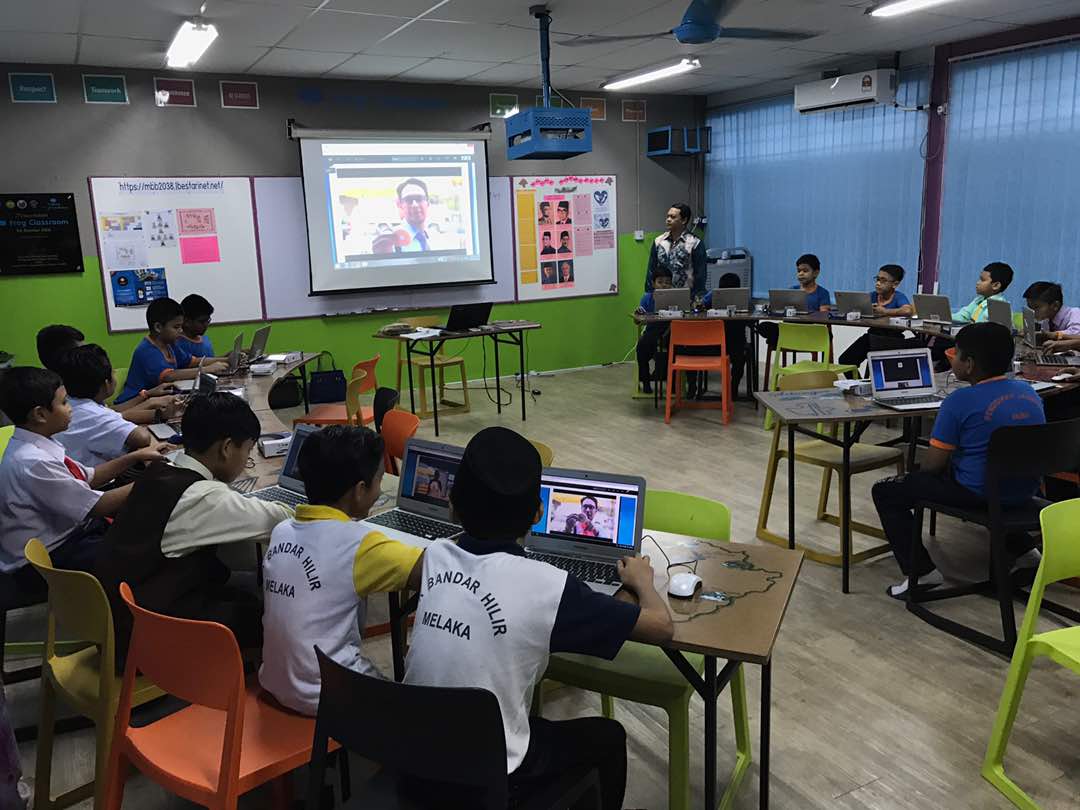
Making the most of available resources
As we saw in the results of our survey, and as I continually encountered in my school visits, internet access and infrastructure are the top two challenges Malaysian schools face when using technology. This is no different for SK Sikamat, a rural school in the state of Negeri Sembilan, near the capital of Kuala Lumpur. With other pressing matters to attend to such as repairing the electrical infrastructure after a severe thunderstorm, schools often put blended-learning efforts on the backburner. But pioneering teachers know that you don’t have to have a 1:1 device program or the best internet connection to transform your instruction.
Despite slow internet and a limited number of devices, Mr. Yuslan of SK Sikamat has managed to revolutionize the way his students learn. His D1 (the US equivalent of first grade) students get to practice their math skills in a Station Rotation where they don’t always utilize Chromebooks or Netbooks. Students at stations with technology usually work in pairs or groups not only to limit the number of devices accessing the low-capacity internet, but also so they help each other work through practice problems. By having only half the class utilizing technology at any one time, Mr. Yuslan has found a way to work more individually with students while keeping within the logistical capabilities of the technology he is given. 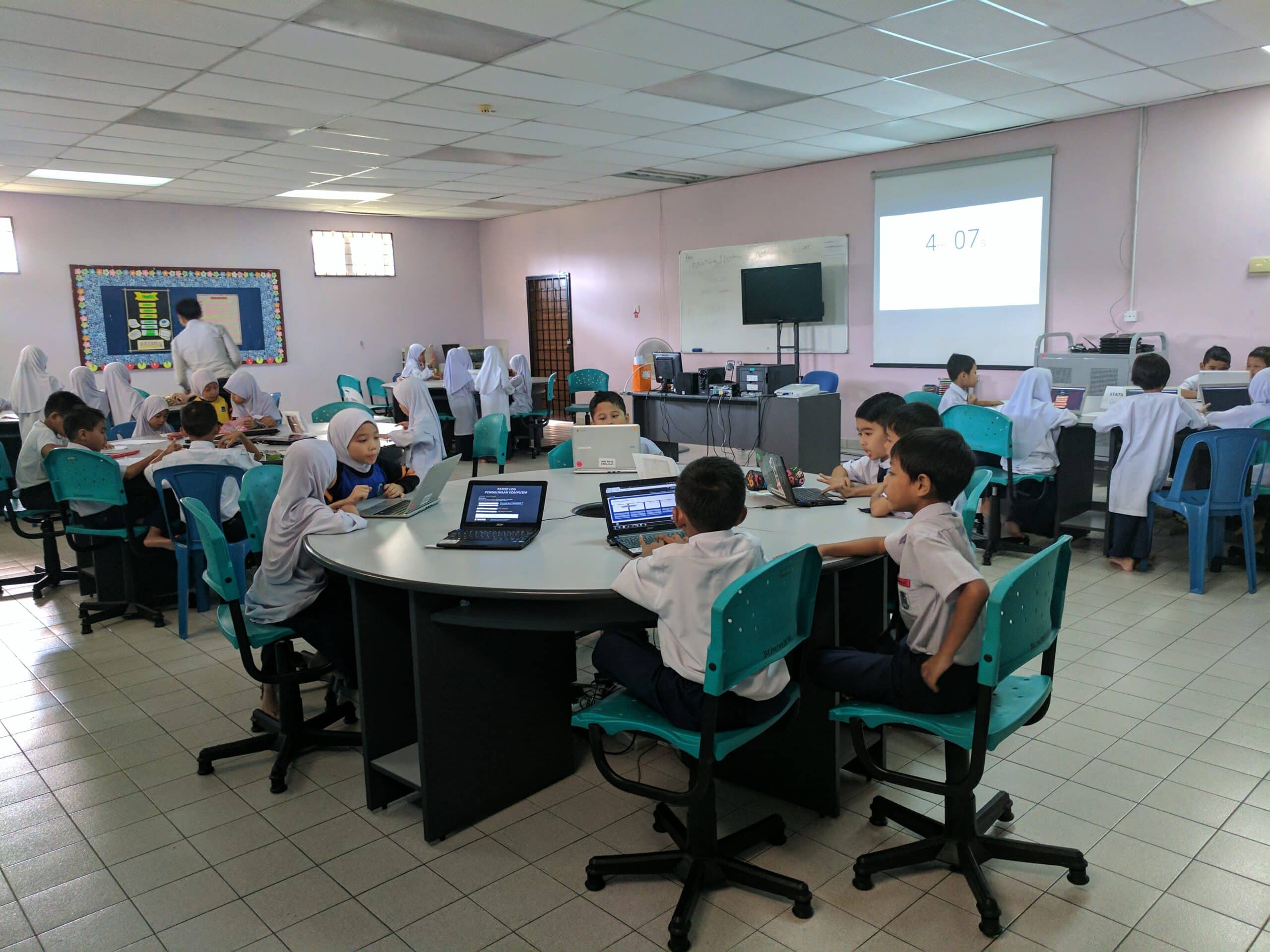
Focusing on blended-learning PD
One of the last stops in my journey to visit Malaysian blended-learning schools was in the northern state of Perak. There, I visited SMK Methodist (ACS Sitiawan), who also had established a Frog Classroom in their school. However, their primary challenge wasn’t finding the funding for this classroom; rather, it was finding high-quality professional development for their teachers so that they could make the most of the space. The headmaster of this secondary school was focused on transforming student learning inside and outside of the classroom. That’s why, after deciding to implement a Flipped Classroom model of blended learning, he sought professional development opportunities that were specific to instructional change–not just ICT training.
In addition to holding its own extensive teacher workshops in the beginning of 2017, ACS Sitiawan partnered with the Advanced Global Institute of Learning Excellence (AGILE) to learn the basics of a Flipped Classroom and to see examples in action at a university level. This partnership proved fruitful for the school in understanding how to prepare their teachers to make the instructional shift of giving their students more autonomy in their learning. It also helped to spur protocols and processes for teachers embarking on this blended journey, arming them with resources like lesson plan templates to guide them in their pedagogy. The teachers I spoke with were excited about this new way of teaching, and more importantly, confident in their ability to conduct blended-learning lessons.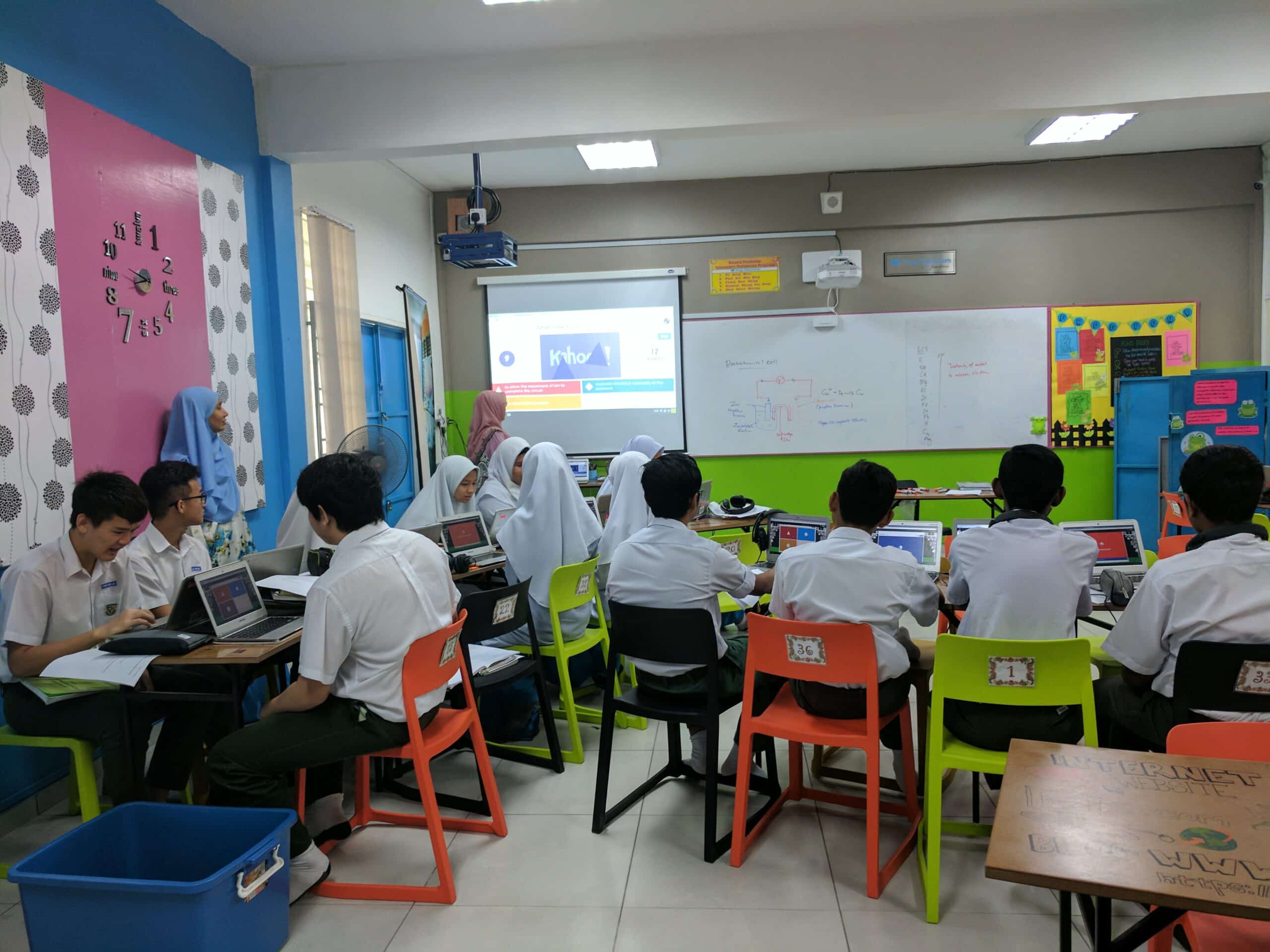
Of course, these were not the only schools who came up with innovative ways to tackle their blended-learning challenges–many of the other schools I visited had similar success stories. All, however, are brilliant examples of how even the most common blended-learning setbacks can be overcome. Although it’s safe to say the entire US system won’t adopt a single platform like the Frog VLE, state and regional examples can learn from the variety of models that crop up. With dedicated educators and the right supports, I have high hopes for blended-learning programs to transform student learning across Malaysia.
Want to learn more about the blended-learning schools we visited in Blended Beyond Borders? Check out their profiles in our BLU Directory.

